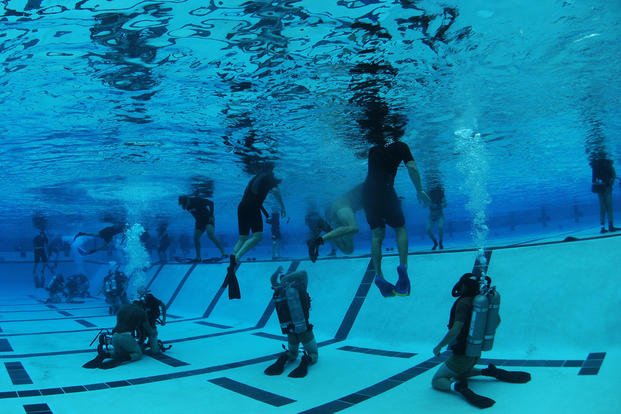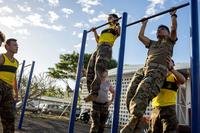People well beyond their teens seek military service. There are age limits in the military for a reason, but even for the SEAL training program, the window to attend Basic Underwater Demolition/SEAL training (BUD/S) is from 17-28 years.
I’ve been asked this question frequently, from people in the age bracket as well as many beyond the age limit who would need age waivers to join the Navy and enter the SEAL Training program.
Does Age Really Matter?
Age matters but not necessarily in the way many people think. Typically, the reason why people do not finish SEAL training is that they were underprepared; that has nothing to do with age. If you look at reasons why people quit or fail the course, there is a laundry list: too cold, too uncomfortable (wet and sandy), too much running, too much swimming/pool confidence, too much PT/load-bearing events (boats/logs/rucks), too much negative feedback, too much everything.
BUD/S will expose a weakness quickly, and if you are not prepared for that, it can be overwhelming. If someone says they did not make it because they were “too old,” then the entire recruiting system is wrong and the Navy should change the age limits. People in their late 20s and early 30s (and even older) have made it to and through BUD/S before. The age limits are fine.
In my opinion, the 17- and 18-year-old candidates have a harder time than the older candidates. (See Perfect Storm for Failure.) Maturity goes a long way with this type of training, and a few years of preparation will help tremendously in your ability to handle the daily workload and physical standards of each phase. Even some candidates on the younger side of the age bracket are growing and susceptible to many running overuse injuries at a higher rate than others.
Related Video: TFR 112 - The "Old Guy" Preps for BUDS
What Should the Older Candidate Do Before and During BUD/S?
Recovery. It is a small difference, but the 18-year-old body will recover faster than a body a decade or more older, so recovery has to be the number one goal every day for the older BUD/S student.
But to be honest, recovery is critical for ALL BUD/S students. Actively pursuing recovery from a tough day/week of training needs to be accomplished by all students in order to be successful, no matter what the age. This means good food, hydration, healthy snacks, rest on weekends, good sleep nightly (when available), stretching, foam rolling, compression garments, massage tools and wound/joint care will help the active student attending any selection program.
Performance. No matter your age, there is a fitness standard, tactical skills standard and a military standard you have to meet. Well, “exceeding the standard should be the standard” should be the mindset of any BUD/S student in preparing and attending SEAL training -- young or old. There is no age performance drop at BUD/S, just one standard for all students.
Injuries. Another thing to consider is that injuries happen at BUD/S to students of all ages. Knowing how to play with pain is part of the game for all successful students. But being able to discern aches and pains from real injuries requires some maturity. Seeking medical advice before it gets so bad that you fail events is something you need to understand and be open to.
Misconception. Many people who are not in their teens feel they “missed the boat” on joining the military. There is no doubt in my mind that someone in their late 20s and early 30s can attend BUD/S and crush it -- as many people have and still do today. It just requires thorough preparation, a focused mindset on goal accomplishment and getting it done.
Remembering how many hurdles you overcame to get the opportunity to serve in the military, qualify for special-ops training and your years of preparation should be a constant in your head. There will be days that make you question your abilities, but you have to keep pushing yourself forward if you really want it.
A Quick Word About Age Waivers (over 28 Years Old)
Age waivers are available on a case-by-case basis. An applicant has to stand out in many areas in order to even begin the process of moving age waivers up the chain of command from the recruiter’s office. Here is a short list of ways to stand out among the crowd.
1. Physical test scores. PST scores have to be above average in order to be taken seriously: an eight-minute, 500-yard swim; 100 push-ups, 100 sit-ups, 20 pull-ups and a nine-minute, 1.5-mile run. Score in this area, and a recruiter likely will take you seriously and take the time to move the waiver up the chain of command.
2. Work history. What have you been doing for the last decade? What skill set/trade do you bring to the table? Are you a leader/entrepreneur? Do you have an extensive travel history or speak foreign languages?
3. Collegiate history. It may have been awhile since college or you may have advanced degrees that will help you stand out among other enlisted candidates. Most enlisted SEALs have college degrees, many played sports, and some have advanced degrees.
4. Who you know. Sometimes a letter of recommendation from current Navy SEALs or higher-ranking officials can go a long way to helping people decide whether you will receive an age waiver.
Stew Smith is a former Navy SEAL and fitness author certified as a Strength and Conditioning Specialist (CSCS) with the National Strength and Conditioning Association. Visit his Fitness eBook store if you’re looking to start a workout program to create a healthy lifestyle. Send your fitness questions to stew@stewsmith.com.
Want to Learn More About Military Life?
Whether you're thinking of joining the military, looking for fitness and basic training tips, or keeping up with military life and benefits, Military.com has you covered. Subscribe to Military.com to have military news, updates and resources delivered directly to your inbox.



















